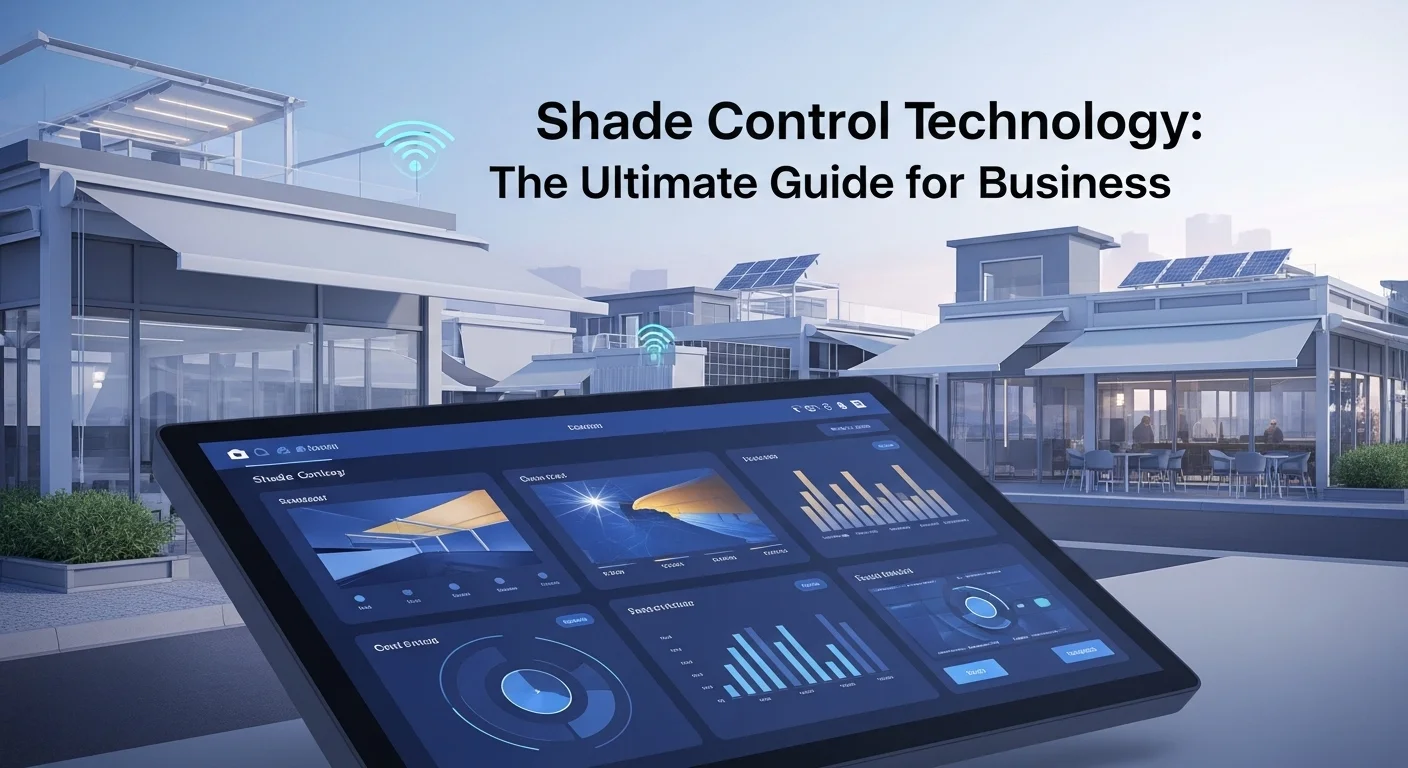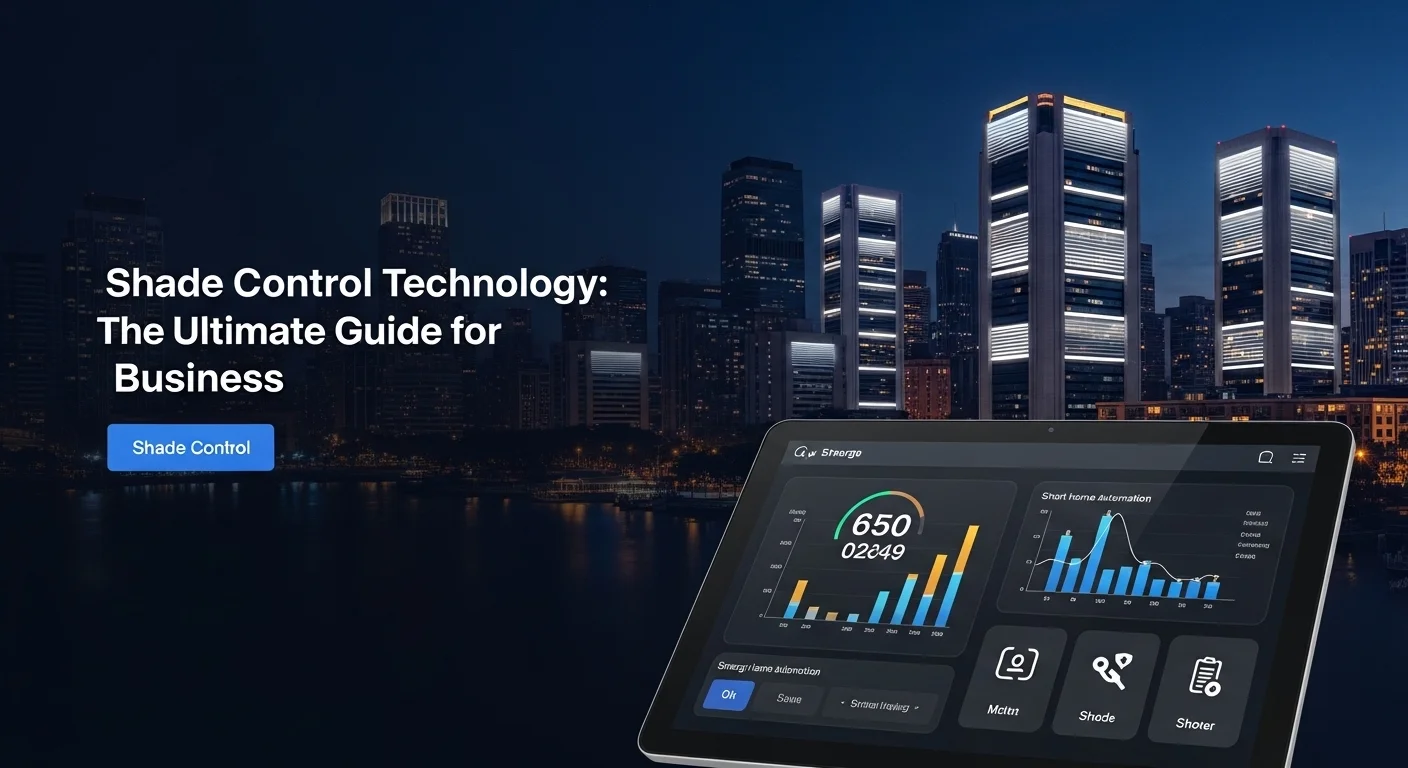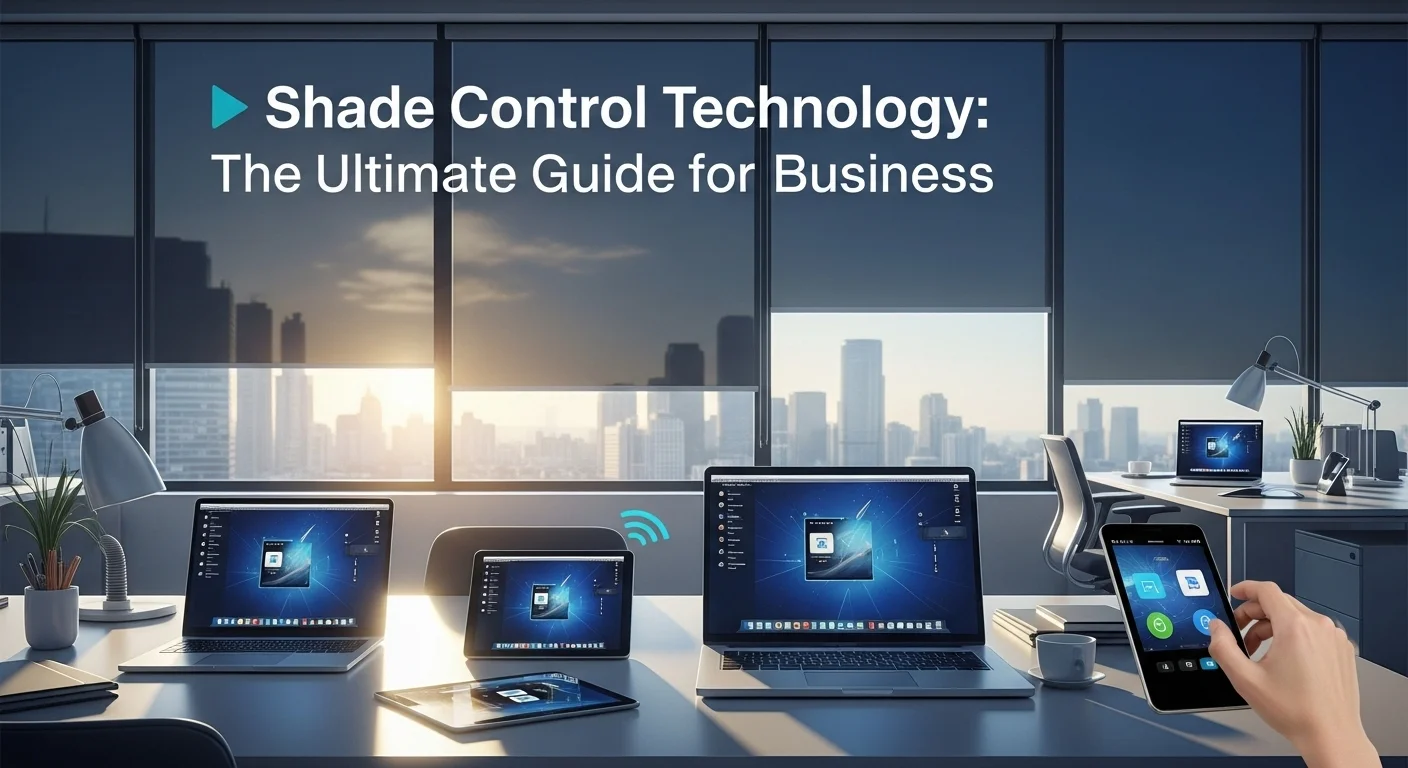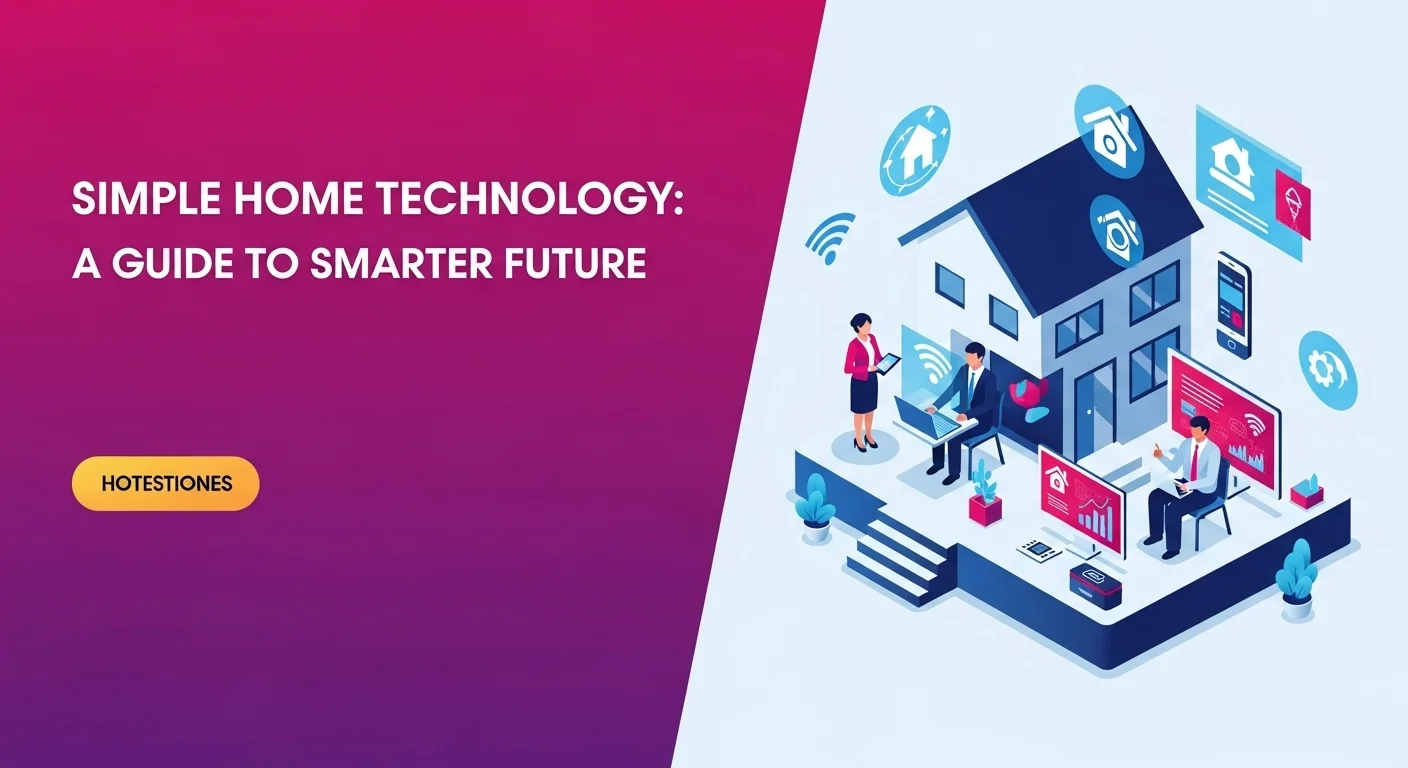Shade Control Uncovered: How Smart Shades Are Changing Our Homes and Offices

Executive Summary
For over a decade, I've been helping people transform their living and working environments, and I can tell you that one of the most powerful, yet often overlooked, technologies is smart shade control. It's so much more than a fancy remote for your blinds. It’s about creating a space that works for you—saving you money on energy, protecting your interiors, boosting your productivity, and even making your home more secure. Think of your windows as dynamic gateways for light and heat. By intelligently controlling them, you take charge of your environment. In this guide, I'm going to walk you through everything I've learned, from the basic concepts to sophisticated integrations with systems like Control4, Z-Wave, and Alarm.com. We'll explore how shades and lighting can work together in perfect harmony and unlock the full potential of your smart home or business.
Table of Contents
- What Exactly is Shade Control Technology?
- The Real Magic: How Smart Systems Work Together
- Your Guide to Shade Tech and Business Solutions
- A Deeper Look: Motors and Communication Protocols
- Pro Tips for a Smarter Shade Experience
- Getting it Right: Best Practices for a Perfect Setup
What Exactly is Shade Control? More Than Just a Remote for Your Blinds
Let's get one thing straight: when we talk about shade control technology, we're not just talking about pressing a button to move your blinds. That's just the start. At its heart, shade control is about making your window coverings intelligent. It’s about creating an automated system that enhances your comfort, efficiency, and security without you even having to think about it. I've seen firsthand how this technology transforms a space from a static box into a dynamic, responsive environment. Its real importance lies in the massive benefits it brings to the table, from real energy conservation to a more productive day at the office.
One of the first things my clients notice is the impact on their energy bills. It's a huge win. Think about it: your building's HVAC system works tirelessly to keep you comfortable. Automated shades are its best friend. On a scorching summer day, they can automatically lower to block that intense solar heat, giving your AC a much-needed break. I've seen clients cut their cooling costs by up to 20% after a proper installation. In the winter, the logic flips. The shades open up to let in that beautiful, free solar heat, easing the burden on your furnace. It's not just about saving money; it’s about being smarter with our energy, which is something we can all feel good about.
But it's not all about the numbers. It's about how a space feels. In my own office, I used to struggle with that blinding afternoon glare on my screen. Now, my shades adjust automatically, cutting the glare without making the room feel like a cave. That simple change made a huge difference in my focus and reduced eye strain. In a business setting, this translates directly to a more comfortable and productive workforce. For homeowners, it’s about that little touch of magic—waking up gently as the shades slowly rise with the sun, or having them all close for movie night with a single voice command. It’s these quality-of-life improvements that really sell the experience.
The Real Magic: How Smart Systems Work Together
The true power of modern shade control is unlocked when it stops being a standalone gadget and starts talking to the rest of your smart ecosystem. This is where systems like Control4, protocols like Z-Wave, and services like Alarm.com come into the picture. This is how you create a truly 'smart' home or office.
Think of a high-end system like Control4 as the conductor of an orchestra. Your shades are just one instrument. With Control4, I can program shades to work in concert with lights, thermostats, security systems, and even your audio/video gear. I love setting up a 'Movie Night' scene for clients. One button press dims the lights to the perfect level, lowers the shades completely, and powers up the projector. It’s that seamless, effortless experience that defines a premium automation system.
For those who like more flexibility, a Z-Wave shade controller is a fantastic option. Z-Wave is like a universal language for smart devices. You can mix and match brands, and they'll all communicate beautifully. The real beauty of Z-Wave is its mesh network. Every Z-Wave device you add helps strengthen the signal, making the whole system more reliable. It’s a robust and popular choice for both DIYers and professionals because it’s not a walled garden; it's an open playground for building a custom smart home.
The most natural partnership, in my opinion, is between shades and lighting control. Together, they manage the entire lightscape of a room. This is called 'daylight harvesting.' I install sensors that measure the sunlight coming in. On a bright day, the shades might lower just enough to stop glare, while the indoor lights dim down automatically because they're not needed. I've seen this combination slash lighting energy usage by over 60% in commercial offices. It's the ultimate in efficiency and ensures perfect lighting all day long.
Finally, let's talk security. Integrating your shades with a system like Alarm.com adds a brilliant layer of protection. When you arm your system and leave, the shades can automatically close, hiding your valuables from view. Even better is a 'lived-in' vacation mode that intelligently opens and closes shades and turns lights on and off at different times. It's far more convincing than a simple timer and a great deterrent. It's this kind of thoughtful integration that turns a collection of smart devices into a cohesive, intelligent system that truly looks after you.

Your Guide to Shade Control Tech and Business Solutions
Getting into the nitty-gritty of shade control can seem daunting, but it's really about understanding a few key pieces of the puzzle. Once you grasp the hardware and the ways they communicate, you can make smart choices for your home or business. Let's break it down into simple terms.
A Deeper Look: Motors and Communication Protocols
Every automated shade has a motor, which is the muscle of the operation. They're usually tucked away inside the roller tube, so you never see them. You'll typically encounter DC motors, which are the quiet, energy-sipping champs perfect for battery-powered shades, and more powerful AC motors for the heavy-lifting jobs, like massive windows in a commercial lobby. Choosing the right one is step one.
Next is communication—how you tell the motor what to do. Think of these protocols as different languages that smart devices speak:
- Radio Frequency (RF): This is a very common wireless language. It's reliable and works through walls. The only catch is that one brand's RF often doesn't speak to another's. It's like they have different dialects.
- Z-Wave: This is like the Esperanto of the smart home world. A Z-Wave shade controller can talk to a Z-Wave light switch or thermostat, regardless of the manufacturer. Its mesh network design is genius—the more devices you have, the stronger and more reliable your network becomes. Plus, it has strong security built in.
- Zigbee: Another popular mesh network language, very similar to Z-Wave. Some major brands use it, and it's also an open standard. The choice between Z-Wave and Zigbee often just depends on what other smart devices you already own and love.
- Wi-Fi: Some of the newer DIY-friendly shades speak Wi-Fi, connecting directly to your home router. It's simple to set up because you don't need an extra hub. The trade-off is that it can clog up your Wi-Fi network and tends to use more power, which isn't ideal for battery operation.
- Hardwired Systems: For the ultimate in reliability, especially in new construction or major commercial projects, nothing beats a hardwired system. Wires connect the shades to a central brain. It's bulletproof and lightning-fast, the gold standard for high-end installations.
Business Solutions and Commercial Applications
When I consult with businesses, the conversation always starts with ROI, and with shade control, the case is easy to make. The energy savings from reduced HVAC and lighting costs are tangible and measurable. For a building with a lot of glass, the savings alone can pay for the system in just a few years.
But the story doesn't end there. I always talk about the 'human' return. An office free from glare and uncomfortable hot spots is an office where people are happier and more productive. It's a subtle but powerful benefit. And in a conference room, imagine pressing one 'Presentation' button that dims the lights, lowers the shades, and turns on the projector. It's a professional touch that always impresses clients.
The hospitality industry has embraced this in a big way. I've helped hotels set up 'Welcome' scenes where the shades open dramatically as a guest walks into their room for the first time. It creates an immediate 'wow' factor. When the guest checks out, an 'Unoccupied' scene kicks in, closing the shades and setting back the thermostat to conserve energy. It's smart, efficient, and great for the guest experience.
Integrated Platforms: Bringing It All Together
To truly get that seamless experience, you need a platform that can act as the central hub for your entire automation strategy.
With a Control4 system, I can program deep, personalized automation. It's not just about schedules. We can use GPS from your phone to know when the last person has left the building, triggering an 'Away' scene that arms the security, closes the shades, and sets the temperature to an eco-friendly level. It can even check the weather forecast and preemptively lower the shades on a hot day. It’s this level of intelligence that makes a Control4 shades setup feel truly futuristic.
An Alarm.com shade control setup is all about peace of mind. By linking shades to your security panel, you get practical benefits. For example, in the event of a fire alarm, we can program the shades to open automatically, giving firefighters a clear view inside. The vacation mode is brilliant, realistically mimicking your daily routines to deter anyone watching the house.
And as I've said, the synergy of shades and lighting control is where the magic really happens. This is 'total light management.' I use systems with photosensors that constantly measure the daylight. The system then makes tiny, imperceptible adjustments to both the shades and the lights to keep the room perfectly lit all day. It's not just energy-saving; it's about creating the perfect ambiance and a healthier visual environment, whether you're working, relaxing, or protecting priceless art in a gallery.

Pro Tips and Strategies for a Smarter Shade Experience
Okay, so you're sold on the idea. But how do you go from a cool gadget to a system that genuinely improves your life? Over the years, I've developed a list of tips and strategies that I share with every client. This is my cheat sheet for getting the most out of your shade control investment.
Getting it Right: Best Practices for a Flawless Setup
A great smart shading experience starts with a solid foundation. Don't skip these steps:
- Choose Your Power Wisely: Think about the room. For a bedroom, a whisper-quiet DC motor is a must. For that huge picture window, a powerful AC motor is the right call. For power, battery-operated shades are easiest for existing homes, but remember you'll be charging them. Low-voltage wiring is my preferred middle ground—consistent power without complex electrical work.
- Build a Rock-Solid Network: Your shades are only as smart as their connection. If you're using a Z-Wave shade controller, don't skimp on devices. More devices mean a stronger mesh network. For Wi-Fi shades, walk around and test the signal at every single window. If it's weak, a mesh Wi-Fi system is a non-negotiable upgrade.
- Calibrate Like a Pro: Take the time to perfectly set the top and bottom limits for your shades. You want them to align perfectly when they're up and close tightly for privacy. It's a small detail that makes a huge difference in the finished look.
- Don't Forget the Walls: Apps are great, but a physical keypad is essential. I always install them in intuitive places, like next to the light switch. A 'Goodnight' button on the keypad by your bed is pure bliss. Trust me on this.
Strategies for Creating True Automation Magic
Now for the fun part. Let's make your shades truly intelligent.
- Think in 'Scenes,' Not Schedules: Anyone can set a timer. The real power is in event-based automation. My 'Movie Time' scene is a classic, but let's get more creative. Link your system to a weather service. High winds coming? The system automatically raises your exterior shades to protect them. High UV index? The shades lower to protect your wood floors and furniture.
- Let Sensors Be Your Eyes: A simple sun sensor is the best investment you can make. It allows the system to be proactive. It will lower the shades to block heat *before* the room feels like an oven. An occupancy sensor is great for rooms like offices or playrooms—shades open when you walk in and close when you leave. Simple, effective, and saves energy.
- Use Your Phone's Location (Geofencing): This feels like magic. Set up an 'Away' scene that closes your shades, adjusts the thermostat, and arms your security the moment you drive away from your house. And create a 'Welcome Home' scene that does the reverse as you pull into the driveway.
- Create Scenes for Your Life: Think about what you actually do in each room. For my kitchen, I have a 'Cooking' scene (all lights bright, shades up) and a 'Dinner' scene (soft, dimmed lights, shades partially lowered for a cozier feel). Your home should adapt to you, not the other way around.
- Maximize Security and Privacy: Use your alarm.com shade control for more than just vacation mode. I always program a one-touch 'Privacy' button that instantly closes the shades on the ground floor and in bedrooms. It's a simple feature that clients use every single day.
Finding Your Perfect Fit
The best system for you depends on your goals. If you want an all-in-one, professionally managed ecosystem, a platform like Control4 is unmatched. If you love to tinker and want endless customization, building around a Z-Wave shade controller is the way to go. If security is your number one priority, Alarm.com offers a fantastic, integrated solution.
To see some of these systems in action and get honest, in-depth reviews, I often point my clients to great online resources. For example, there are some excellent video reviews out there that really break down the user experience of different smart blinds. A video like the one here is a great place to start your research: https://www.youtube.com/watch?v=sJ-p_b-54kM. Seeing how someone lives with the tech day-to-day is invaluable.
Ultimately, a well-planned shade control strategy is about creating an environment that feels intuitive, secure, and comfortable. By combining solid hardware with intelligent automation, you can unlock a level of convenience and efficiency that truly feels like living in the future.
Expert Reviews & Testimonials
Sarah Johnson, Business Owner ⭐⭐⭐⭐
As a small business owner, I found this article on shade control really insightful. The energy-saving aspect is a huge plus. I just wish there were a few more case studies on how other businesses like mine have implemented it. Still, a great starting point!
Mike Chen, IT Consultant ⭐⭐⭐⭐
Solid overview of shade control. As an IT guy, I appreciated the breakdown of protocols like Z-Wave and Zigbee. It cleared up a few things for me. Some of the high-level concepts could be a bit simpler, but overall, very helpful.
Emma Davis, Tech Expert ⭐⭐⭐⭐⭐
Wow, what a fantastic deep dive! I'm specializing in home automation, and this piece on shade control is one of the most comprehensive I've read. It connects all the dots between different systems like Control4 and Alarm.com. Saved and bookmarked!



